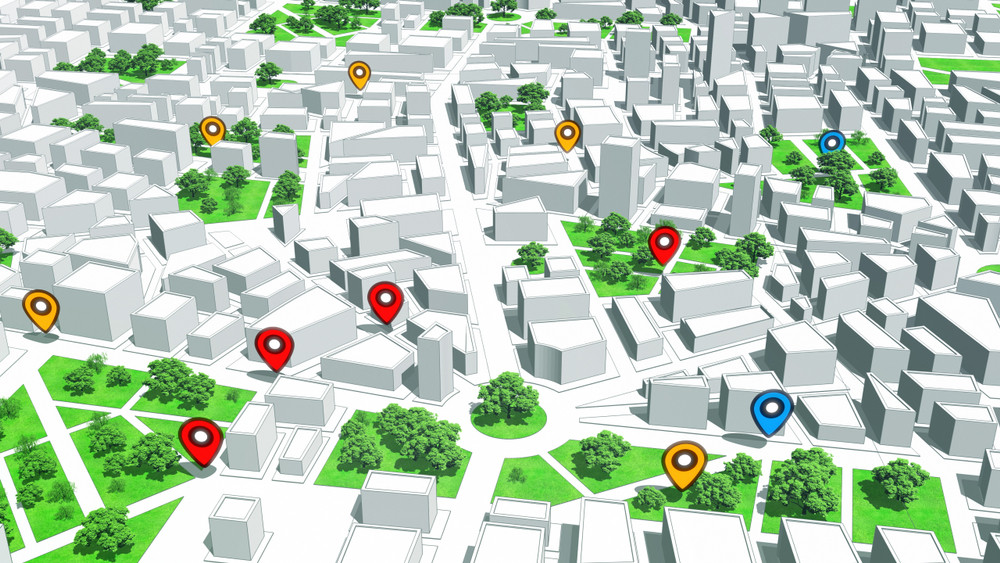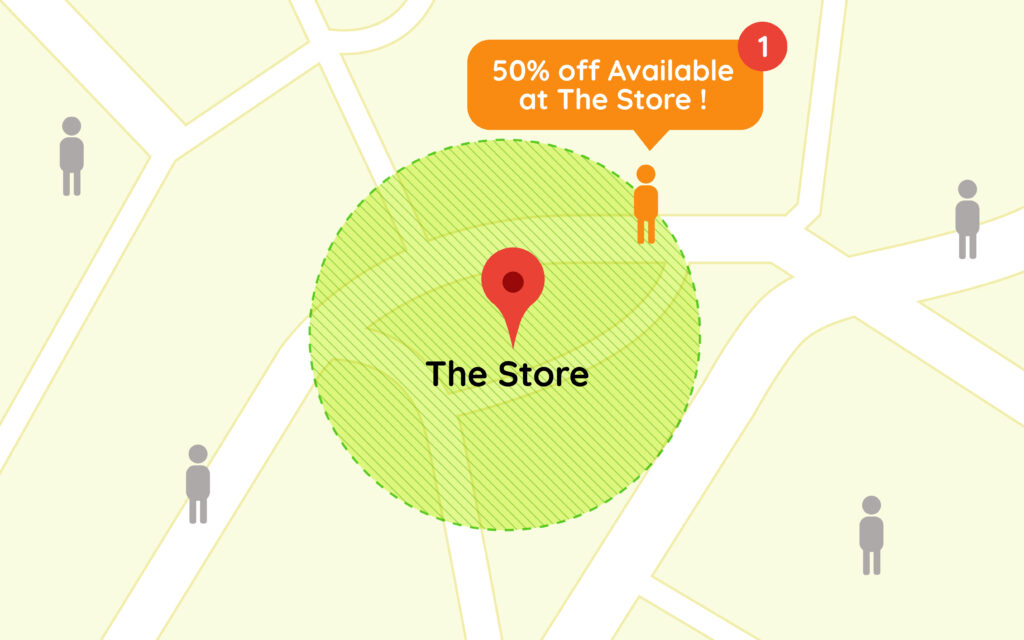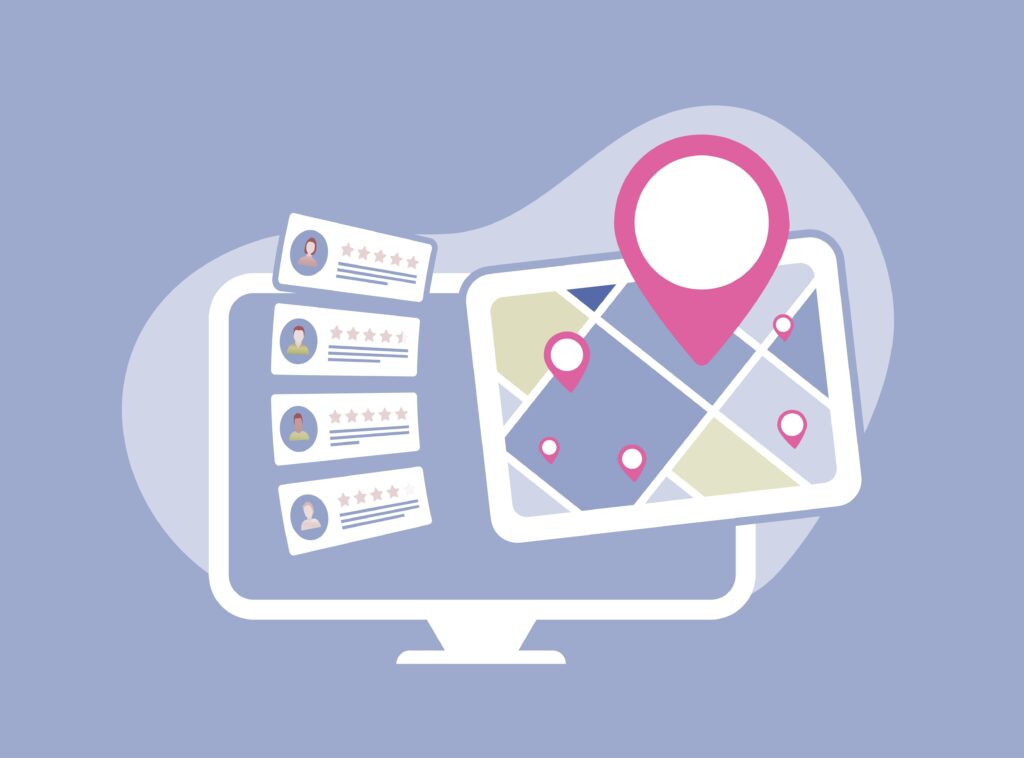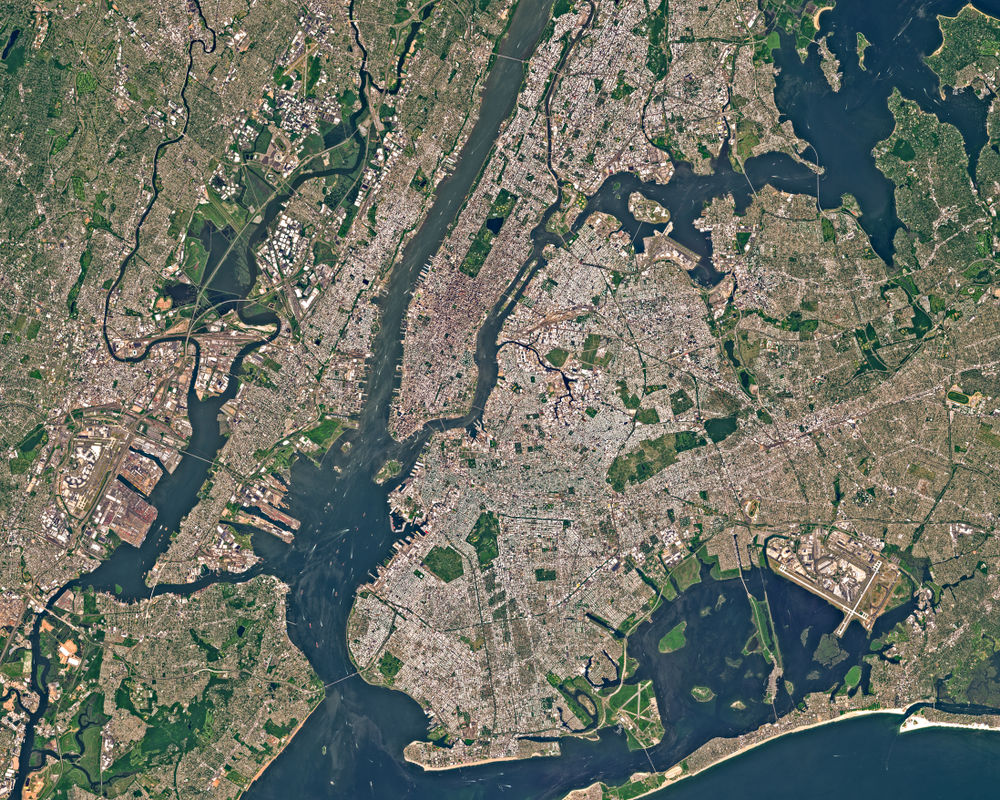Geofencing can be a powerful growth marketing tool for businesses to attract and engage their target audience. By leveraging location-based technology, companies can deliver personalized messages and promotions to potential customers within a specific geographical area. In this article, we will explore the fundamentals of geofencing marketing, its benefits, and how to successfully implement it in your marketing strategy.

Understanding Geofencing Marketing
Before diving into the intricacies of geofencing marketing, let’s first define what it is exactly. Geofencing advertising is a location-based marketing strategy that utilizes virtual perimeters or “geofences” to trigger the delivery of targeted advertisements or notifications to users who enter or exit a specific area. These geofences are created around physical locations, such as stores, events, or even entire cities.
Geofencing marketing has revolutionized the way businesses engage with their target audience. By leveraging the power of location-based technology, companies can deliver personalized and timely messages to potential customers, leading to higher conversion rates and increased brand awareness. This targeted approach not only enhances the customer experience but also allows businesses to optimize their marketing efforts for maximum impact.
What is Geofencing Marketing?
Geofencing marketing involves using GPS or RFID technology to establish virtual boundaries. When a user’s mobile device enters or exits these predetermined boundaries, it captures a device’s mobile advertising ID (or MAID), and triggers the delivery of relevant messages or offers. This allows businesses to reach potential customers who are in close proximity to their physical location, increasing the chances of conversion and customer engagement.
Moreover, geofencing marketing enables businesses to gather valuable data on consumer behavior and preferences. By analyzing the location-based interactions of users, companies can gain insights into their target market’s interests and habits, allowing for more tailored marketing campaigns and product offerings.
The Technology Behind Geofencing
The key technology behind geofencing marketing is Global Positioning System (GPS) or Radio Frequency Identification (RFID). GPS allows businesses to accurately determine a user’s location using signals from satellites, while RFID utilizes radio waves to identify and track tagged objects or devices. By integrating these technologies with mobile apps, businesses can effectively deploy geofencing campaigns.
Furthermore, the use of geofencing technology is not limited to marketing applications. Industries such as logistics and security also benefit from geofencing, utilizing it to track shipments, monitor assets, and enhance overall operational efficiency. The versatility and effectiveness of geofencing technology make it a valuable tool for a wide range of businesses and organizations.
The Benefits of Geofencing Marketing

Geofencing marketing offers several benefits for businesses looking to enhance their marketing efforts. In today’s digital age, where consumers are constantly bombarded with advertisements, geofencing marketing provides a targeted approach that can cut through the noise and reach potential customers effectively.
One of the primary advantages of geofencing marketing is its ability to engage customers in real-time. By delivering personalized and location-specific messages, businesses can capture the attention of potential customers who are physically near their stores or events. This results in higher engagement rates and a greater likelihood of conversions.
Moreover, geofencing marketing also fosters a sense of urgency among consumers. When individuals receive notifications about a limited-time offer or a special promotion while they are in close proximity to a business, they are more likely to act on it immediately. This sense of immediacy can drive impulse purchases and boost sales for businesses.
Enhancing Local SEO
Geofencing marketing also plays a vital role in boosting local search engine optimization (SEO). When potential customers search for products or services related to a specific location, businesses utilizing geofencing have the advantage of appearing in relevant search results. This increases visibility and drives qualified traffic to their physical stores or websites.
Furthermore, geofencing can help businesses improve their online reputation and credibility. By targeting consumers in specific geographical areas and providing them with relevant and timely information, businesses can establish themselves as authoritative sources within their communities. This can especially be a viable marketing strategy for family businesses, as they can concentrate their marketing efforts on consumers local to them.
Real-Time Analytics and Insights
Another key benefit of geofencing marketing is the ability to gather real-time analytics and insights. By analyzing customer behavior within geofenced areas, businesses can gain valuable data on consumer preferences, foot traffic, and conversion rates. This information enables them to make data-driven decisions and optimize their marketing strategies for better results.
Additionally, the insights derived from geofencing analytics can help businesses understand the effectiveness of their marketing campaigns and make adjustments in real-time. By monitoring metrics such as click-through rates, dwell times, and conversion rates, businesses can identify trends and patterns that can guide future marketing initiatives. This iterative approach to marketing allows businesses to stay agile and responsive to changing consumer behaviors and market dynamics.
Setting Up Your Geofencing Marketing Strategy

Implementing a successful geofencing marketing strategy requires careful planning and execution. Here are some key steps to get you started:
Defining Your Geofence
The first step is to define the boundaries of your geofence. Consider your target audience and the locations they are likely to visit. It could be around your physical store, a competitor’s location, or even an event related to your industry. Ensure that the geofence is appropriately sized to maximize reach without being too broad.
When defining your geofence, it’s essential to take into account the specific behaviors and preferences of your target audience. Analyzing data such as foot traffic patterns, popular hangout spots, and competitor locations can help you pinpoint the most strategic areas to set up your geofence. By understanding your audience’s movements, you can tailor your marketing messages more effectively.
Creating Compelling Messages
Once your geofence is established, the next step is to create compelling messages that resonate with your target audience. Think about the location and the context in which your messages will be displayed. Tailor your offers or promotions to capture the attention of potential customers and entice them to take action.
Consider personalizing your messages based on the specific location within your geofence. For example, if a customer is near your store, you could offer a time-limited discount to encourage them to make a purchase. By making your messages relevant to the recipient’s current location, you can increase the chances of conversion and engagement.
Choosing the Right Platforms
Selecting the right platforms for deploying your geofencing marketing campaigns is crucial for success. Consider the mobile apps your target audience is likely to be using and partner with them to maximize your reach. Additionally, ensure that your platforms are capable of accurately tracking user locations and delivering messages in real-time.
It’s also important to evaluate the technological capabilities of the platforms you choose. Look for features such as geofence customization, advanced analytics, and A/B testing functionality to optimize your campaigns. By leveraging the full potential of your chosen platforms, you can fine-tune your geofencing strategy and achieve better results.
Measuring the Success of Your Geofencing Campaign

After implementing your geofencing marketing strategy, it is essential to monitor and measure its effectiveness. This will help you identify areas of improvement and make data-driven adjustments for future campaigns.
One crucial aspect to consider when evaluating the success of your geofencing campaign is the geographical accuracy of your targeting. By analyzing the location data of your target audience, you can determine if your geofence boundaries are effectively capturing the right customer base. Fine-tuning these boundaries can significantly impact the performance of your campaign.
Key Performance Indicators for Geofencing
When measuring the success of your geofencing campaign, focus on key performance indicators (KPIs) that could serve as your North Star metric, such as foot traffic, conversions, and engagement rates. These metrics will give you insights into the effectiveness of your geofencing efforts and enable you to track your return on investment (ROI).
Another important KPI to consider is the dwell time of customers within your geofenced areas. Understanding how long individuals stay within your specified locations can provide valuable information about the effectiveness of your marketing messages and offers. By analyzing dwell time, you can tailor your campaigns to better engage with your audience.
Analyzing and Interpreting Data
Utilize the data collected from your geofencing campaigns to gain valuable insights into customer behavior. Analyze patterns, preferences, and trends to better understand your target audience’s needs and preferences. Take advantage of the real-time analytics provided by geofencing technology to make informed decisions.
Furthermore, consider conducting A/B testing with your geofencing campaigns to compare the performance of different strategies. By testing variables such as messaging, timing, and creative content, you can identify the most effective approaches for engaging your audience within specific geofenced locations.
Making Adjustments for Future Campaigns
Based on your data analysis, make necessary adjustments to optimize your future geofencing campaigns. This could include refining your geofence boundaries, modifying your messaging, or exploring new platforms to expand your reach. Continuous improvement is key to a successful geofencing marketing strategy.
Remember to leverage customer feedback and insights gathered from your geofencing campaigns to refine your targeting strategies. By incorporating feedback loops into your campaign analysis, you can adapt to changing consumer preferences and market trends, ensuring the continued success of your geofencing initiatives.
Overcoming Challenges in Geofencing Marketing
While geofencing marketing offers immense potential, businesses must also address certain challenges to ensure success.
Geofencing marketing has revolutionized the way businesses interact with their target audience by enabling location-based targeting and personalized messaging. However, to fully leverage the power of geofencing, companies need to navigate through various obstacles effectively.
Privacy Concerns and Regulations
One of the primary concerns in geofencing marketing is privacy. Businesses must comply with relevant privacy regulations and obtain proper consent from users before tracking their location. Transparency and clear communication are essential to build trust with your audience.
Moreover, with the increasing focus on data protection laws such as the GDPR and CCPA, companies need to prioritize user privacy and data security to maintain compliance and foster a positive brand image.
Technical Limitations and Solutions
Technical limitations, such as inaccurate location tracking or device compatibility issues, can impact the effectiveness of geofencing campaigns. Working with experienced developers and utilizing advanced location-based technologies can help overcome these challenges and ensure accurate targeting.
Furthermore, staying updated with the latest advancements in geofencing technology, such as beacon integration and RFID tagging, can enhance the precision and efficiency of location-based marketing strategies.
Ensuring Relevance and Avoiding Spam
Another challenge is delivering relevant messages without overwhelming users with spam. Strike a balance between frequency and relevance to avoid annoying your target audience. Tailor your messages based on their preferences and behavior to enhance customer experience and drive engagement.
By leveraging data analytics and machine learning algorithms, businesses can personalize their geofencing campaigns to deliver timely and meaningful content to users, increasing the likelihood of conversion and customer retention.
Future Trends in Geofencing Marketing

The future of geofencing marketing holds exciting possibilities for businesses looking to enhance their marketing strategies. With the ever-evolving landscape of technology and consumer expectations, geofencing marketing is poised to make significant advancements in the coming years.
Integration with Other Marketing Strategies
Geofencing marketing is expected to integrate more seamlessly with other marketing strategies, such as social media advertising and email marketing. By combining these approaches, businesses can create more holistic and impactful campaigns that target customers at multiple touchpoints. Imagine a scenario where a customer receives a personalized email with a limited-time offer when they enter a geofenced area. This integration of geofencing with other marketing strategies will not only increase brand visibility but also drive higher engagement and conversions.
Advances in Geofencing Technology
With advancements in technology, geofencing is likely to become even more accurate and efficient. Improved GPS systems, augmented reality, and enhanced analytics capabilities will provide businesses with better insights and the ability to deliver more personalized and timely messages to their target audience. For instance, imagine a retail store that uses geofencing technology to send push notifications to customers as they enter the store, offering tailored recommendations based on their previous purchases. These technological advancements will enable businesses to create highly targeted and relevant marketing experiences, resulting in increased customer satisfaction and loyalty.
The Growing Importance of Personalization
Personalization will continue to play a crucial role in geofencing marketing. With customers expecting more customized experiences, businesses will need to leverage geofencing technology to deliver hyper-personalized messages and offers. This level of personalization goes beyond simply addressing customers by their names; it involves understanding their preferences, behaviors, and needs. By analyzing data collected through geofencing, businesses can gain valuable insights into their customers’ preferences and deliver tailored messages that resonate on a deeper level. This will improve customer engagement and loyalty while driving conversions.
As businesses strive to stay ahead in a competitive landscape, geofencing marketing offers a valuable opportunity for growth and innovation. By harnessing location-based technology and implementing a strategic approach, businesses can effectively engage their target audience, drive foot traffic, and ultimately achieve their marketing goals. Embrace the power of geofencing marketing today and unlock the potential for growth and success!
Furthermore, as geofencing technology continues to evolve, it is expected to expand beyond traditional marketing applications. Industries such as healthcare and transportation are exploring the potential of geofencing to improve patient care and optimize logistics. For example, hospitals can use geofencing to send real-time notifications to medical staff when they enter specific areas, ensuring timely response to emergencies. Similarly, delivery companies can utilize geofencing to track and optimize their routes, leading to more efficient and cost-effective operations.
With the increasing adoption of wearable devices and the Internet of Things (IoT), geofencing marketing is also likely to extend its reach to these platforms. Imagine a scenario where a smartwatch user receives personalized offers and recommendations based on their location and preferences, enhancing their shopping experience. This integration of geofencing with wearable devices and IoT will open up new avenues for businesses to connect with their customers in innovative ways.